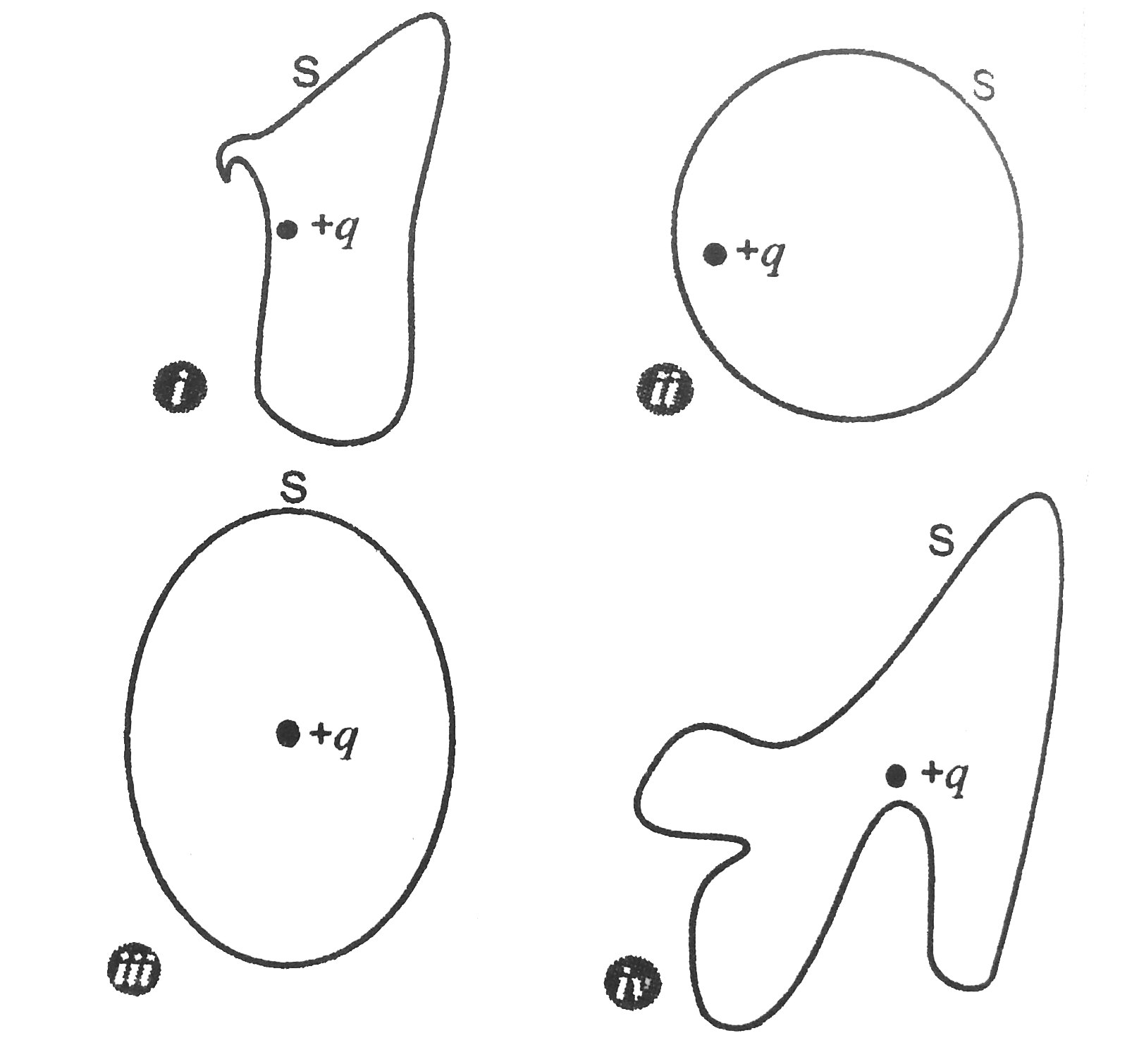Gauss theorem:
Gauss theorem is mainly used to find out the electric flux linked to a closed surface. It does not depend upon the shape or size of surface. According to this theorem, the electric flux linked to a closed surface is equal to times the charge enclosed by the surface.
Let we have a charge q, now if we want to find out the net flux linked to a closed surface around it them,
Electric flux
If we increase the charge enclosed by the surface then electric flux will:
Increases
Decreases
Remain same
Both (a) and (b)
The correct Answer is:A
To solve the problem regarding the effect of increasing the charge enclosed by a closed surface on the electric flux linked to that surface, we can follow these steps:
1. Understand Gauss's Law:
Gauss's Law states that the electric flux (Φ) through a closed surface is directly proportional to the total charge (q) enclosed within that surface. Mathematically, it can be expressed as:
Φ=qϵ0
where ϵ0 is the permittivity of free space.
2. Identify the Variables:
- Let q be the charge enclosed by the surface.
- ϵ0 is a constant (approximately 8.85×10−12C2/N m2).
- The electric flux Φ is what we want to analyze as we change q.
3. Consider the Effect of Increasing Charge:
If we increase the charge q enclosed by the surface, we denote the new charge as q′ where q′>q. According to Gauss's Law:
Φ′=q′ϵ0
4. Establish the Relationship:
Since ϵ0 is a constant, if q′ increases, the electric flux Φ′ will also increase. This can be expressed as:
Φ′=q′ϵ0>qϵ0=Φ
This shows that the electric flux is directly proportional to the charge enclosed.
5. Conclusion:
Therefore, if we increase the charge enclosed by the surface, the electric flux linked to that surface will also increase.
Final Answer:
The electric flux will increase if we increase the charge enclosed by the surface.
---
Gauss's Law states that the electric flux (Φ) through a closed surface is directly proportional to the total charge (q) enclosed within that surface. Mathematically, it can be expressed as:
Φ=qϵ0
where ϵ0 is the permittivity of free space.
- Let q be the charge enclosed by the surface.
- ϵ0 is a constant (approximately 8.85×10−12C2/N m2).
- The electric flux Φ is what we want to analyze as we change q.
If we increase the charge q enclosed by the surface, we denote the new charge as q′ where q′>q. According to Gauss's Law:
Φ′=q′ϵ0
Since ϵ0 is a constant, if q′ increases, the electric flux Φ′ will also increase. This can be expressed as:
Φ′=q′ϵ0>qϵ0=Φ
This shows that the electric flux is directly proportional to the charge enclosed.
Therefore, if we increase the charge enclosed by the surface, the electric flux linked to that surface will also increase.
The electric flux will increase if we increase the charge enclosed by the surface.
Similar Questions
If the flux of the electric field through a closed surface is zero,
View SolutionIf the number of electric lines of force emerging out of a closed surfsace is 1000, then the charge enclosed by the surface is
View SolutionThe net flux passing through a closed surface enclosing unit charge is
View SolutionThe electric flux through the surface

View SolutionThe electric flux through the surface

View SolutionThe electric flux through the surface

View SolutionIf a charge is enclosed by the surface of the sphere then total flux emitted from the surface will be:
View SolutionThe application of Gauss's theorem gives rise to an easy evolution of electric field in the case of
View SolutionA charge Q is placed at the corner of a cube of edge length L. The electric flux linked to one of the faces not touching the charge Q is
View SolutionElectric flux over a surface in an electric field
View Solution
